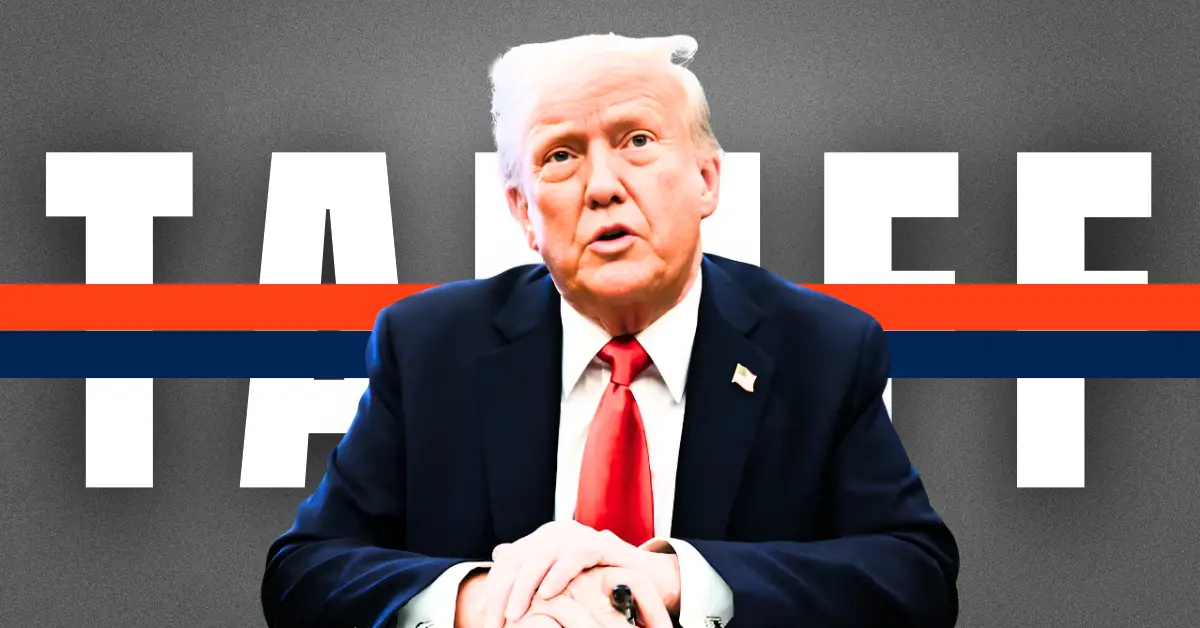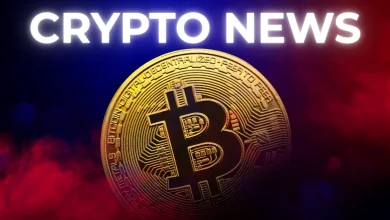
US tariffs correlated with an immediate drop in crypto market capitalization, highlighting their impact beyond traditional finance.
Tariffs create economic uncertainty, potentially leading to inflation, higher interest rates, and decreased investment in volatile assets like crypto.
Tariffs can spur stablecoin adoption in affected economies and create trading opportunities from market volatility.
In early April, U.S. President Donald Trump rolled out new import tariffs aimed at countries with the largest trade surpluses with the United States. The market reaction? Immediate and sharp. Between April 2 and 8, the global crypto market cap dropped by 11.63%.
This isn’t just about trade policy anymore. Tariffs have become a new source of global market volatility and crypto is feeling the pressure.
Here’s what’s happening, and what crypto investors should keep an eye on.
What Are Tariffs?
Tariffs are taxes placed on imported goods. Governments use them to protect local industries from overseas competition. For example, if the U.S. adds a tariff on imported steel, that steel becomes more expensive, giving U.S.-made steel an advantage in price.
But while they may help domestic industries in the short term, tariffs often come with unintended consequences.
How Tariffs Disrupt the Global Economy
Tariffs are risky tools that often backfire:
- Retaliation: After Trump’s recent tariff announcement, China immediately imposed counter-tariffs, escalating trade tensions.
- Consumer Cost: Importers usually pass tariff costs to consumers, fueling inflation.
- Supply Chain Disruption: Industries that rely on global imports—like tech and manufacturing—suffer the most.
- Trade Slowdown: Tariffs curb international trade, dampen global growth, and create prolonged uncertainty.
Why Crypto Markets Are Reacting to Tariff Moves
Tariffs don’t target crypto directly, but they do create conditions that impact the market. Here’s how:
- Investors flee risk
When trade tensions rise, markets become uncertain. Investors tend to pull out of riskier assets like crypto and move toward safer options like gold or U.S. Treasury bonds. This shift lowers demand and drives crypto prices down.
- Inflation and interest rate hikes
Tariffs can fuel inflation. In response, central banks may raise interest rates to cool things down. Higher rates reduce liquidity, making it harder for money to flow into volatile assets like crypto.
- Sell-offs triggered by fear
After the recent tariff announcement, the crypto market saw a sharp 11.63% drop in less than a week. Fear-driven sell-offs are common during economic policy shifts, especially when investor confidence is low.
- Mining costs go up
Crypto mining relies heavily on imported hardware. Tariffs increase those costs, which can reduce mining activity. That in turn could affect the security and decentralization of blockchain networks.
Hidden Opportunities for Crypto
It’s not all bad news. Some parts of the crypto space can actually benefit from the chaos tariffs create.
Stablecoin adoption rises
In countries hit by inflation or currency devaluation due to tariffs, people often turn to stablecoins like USDT or USDC to preserve the value of their money. This increases usage and adoption of stablecoins in global markets.
Volatility creates trading opportunities
Market swings triggered by tariff news give traders more room to profit. Strategies like options straddles or pair trading let them capitalize on price moves in either direction.
Here’s the Bottom Line
Trump’s tariffs may be aimed at fixing trade imbalances, but their ripple effects go far wider – shaking financial markets and dragging crypto into the storm. From rising inflation to disrupted supply chains, the impact is real.
Still, for stablecoins and volatility-savvy traders, this is also a chance to capitalize.
Your takeaway? Even a trade war can open the door to new strategies and growth.
Never Miss a Beat in the Crypto World!
Stay ahead with breaking news, expert analysis, and real-time updates on the latest trends in Bitcoin, altcoins, DeFi, NFTs, and more.
FAQs
The tariffs sparked global tension and fear, leading to an 11.63% crypto market cap drop as investors fled riskier assets.
Yes, tariffs can boost stablecoin use in inflation-hit economies and create profit opportunities through volatility trading.
Yes, tariffs can fuel inflation, prompting rate hikes that reduce liquidity and hurt crypto investment flows.







